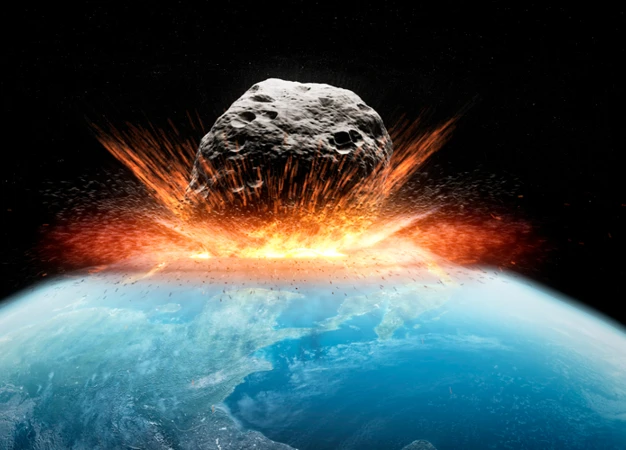Imagine a catastrophic event occurring on Earth, one that is capable of exterminating entire cities and causing widespread devastation. This threat is not just the stuff of science fiction; it is a real and pressing concern known as the threat of near-Earth asteroids. These celestial objects, hurtling through space at incredible speeds, have the potential to collide with our planet with disastrous consequences. In order to safeguard humanity, it is crucial to understand the nature of near-Earth asteroids, the impact they can have, and the strategies that can be employed to defend against them. This article explores the intricacies of this threat and the cutting-edge measures being taken to protect our world.
Contents
- The Nature of Near-Earth Asteroids
- The Impact of Near-Earth Asteroids
- Planetary Defense Strategies
- International Collaboration in Planetary Defense
- Challenges and Future Developments
- Conclusion
-
Frequently Asked Questions
- 1. How many near-Earth asteroids have been discovered so far?
- 2. What is the largest known near-Earth asteroid?
- 3. Can a near-Earth asteroid collide with Earth?
- 4. How frequent are near-Earth asteroid impacts?
- 5. What are the potential consequences of a near-Earth asteroid impact?
- 6. Are there any known near-Earth asteroids on a collision course with Earth?
- 7. Can we predict the trajectory of near-Earth asteroids accurately?
- 8. How can early warning systems help in mitigating the threat of near-Earth asteroids?
- 9. Are there any plans to mine near-Earth asteroids for resources?
- 10. How can international collaboration enhance our planetary defense strategies?
- References
-
Frequently Asked Questions
- 1. How often do Near-Earth Asteroids pose a threat to Earth?
- 2. What types of Near-Earth Asteroids are of concern?
- 3. Can Near-Earth Asteroids be detected and tracked?
- 4. How are Near-Earth Asteroids classified based on their characteristics?
- 5. What are the potential catastrophic consequences of a Near-Earth Asteroid impact?
- 6. What lessons have been learned from historical impacts?
- 7. How can early warning systems contribute to planetary defense?
- 8. What are deflection techniques and how do they work?
- 9. How can asteroid mining contribute to planetary defense?
- 10. Why is international collaboration important in planetary defense?
- References
- Read More
The Nature of Near-Earth Asteroids
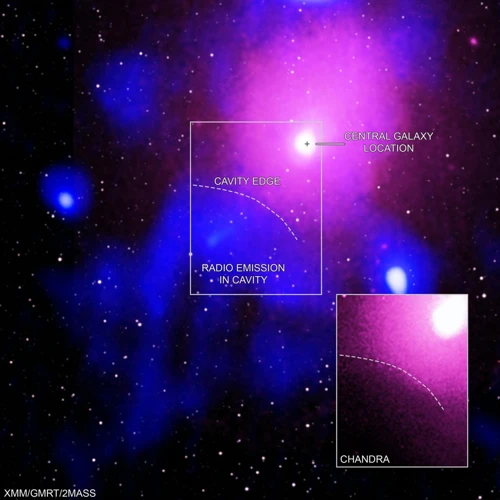
Near-Earth asteroids (NEAs) are a diverse group of celestial objects that orbit the Sun and come within close proximity to Earth’s orbit. They are primarily composed of rocky and metallic materials, similar to the composition of asteroids found in the asteroid belt between Mars and Jupiter. NEAs can vary in size, ranging from small boulders measuring a few meters in diameter to larger bodies spanning several kilometers. These asteroids can be classified into three main types based on their composition: carbonaceous (C-type), silicate (S-type), and metallic (M-type).
C-type NEAs make up the majority of known asteroids and are characterized by their carbon-rich composition. They are thought to contain organic compounds and water, making them of particular interest for future space exploration and resource utilization. S-type NEAs, on the other hand, are composed mainly of silicates, such as olivine and pyroxene, and are similar in composition to stony meteorites that have fallen to Earth. M-type NEAs are primarily made up of metallic elements like iron and nickel and are believed to be remnants from the cores of ancient planetesimals.
Detecting and tracking these NEAs is crucial for providing early warning of potential impacts. A combination of ground-based telescopes and space-based observatories is used to survey the sky and identify these asteroids. The Near-Earth Object Observations (NEOO) program, led by NASA, is responsible for detecting, tracking, and characterizing NEAs to assess their potential risk to Earth. Astronomers use various methods to determine the size, shape, rotation, and composition of these asteroids, including radar observations, infrared spectroscopy, and light curve analysis.
Understanding the nature of NEAs and their characteristics is essential for developing effective planetary defense strategies. By studying their composition, scientists can gain insight into the resources that might be available on these asteroids, such as water and metals. Knowing their size, trajectory, and orbital parameters is crucial for assessing the potential impact and devising appropriate deflection techniques. Ultimately, by unraveling the mysteries of these celestial bodies, we can ensure the safety and preservation of our planet.
For further information about celestial bodies, you can explore the cultural significance of the Chinese Moon Festival and the mythological figures like Chang’e, who is associated with this traditional festival.
1. Types of Near-Earth Asteroids
Different types of near-Earth asteroids (NEAs) can be categorized based on their composition and characteristics. These classifications provide valuable insights into the nature of these celestial objects and aid in understanding their origin and potential threats they pose to our planet.
1. Carbonaceous (C-type) NEAs: Carbonaceous asteroids are the most common type of NEAs. They are rich in carbon compounds, including organic molecules, water, and amino acids. These asteroids are believed to be remnants from the early solar system and may contain valuable resources that could be utilized in future space exploration missions. Some C-type NEAs have been associated with meteorites that exhibit a carbon-rich composition, which provides valuable information about the organic compounds present on these asteroids.
2. Silicate (S-type) NEAs: Silicate asteroids are composed primarily of rocky materials, such as silicates and minerals like olivine and pyroxene. They resemble stony meteorites that have fallen to Earth and are believed to originate from the inner region of the asteroid belt. S-type NEAs have been extensively studied through spectroscopy, which analyzes the light reflected off their surfaces, revealing information about their composition and mineralogy.
3. Metallic (M-type) NEAs: Metallic asteroids are predominantly composed of metals like iron and nickel. These asteroids are thought to be remnants of the cores of ancient planetesimals, which were the building blocks of planets during the early formation of the solar system. M-type NEAs are relatively rare, comprising only a small fraction of known NEAs. They typically have a higher density compared to other types and have been studied through both spectroscopy and radar observations.
Understanding the different types of NEAs is crucial for planetary defense strategies and resource utilization efforts. By studying their composition, scientists can determine the best approaches for asteroid deflection, as different types may require varying techniques. Additionally, the study of these asteroids can provide insights into the composition and distribution of materials in the early solar system. For more information about celestial bodies, you can explore the mystery surrounding the existence of supermassive black holes lurking at the center of galaxies.
2. Characteristics of Near-Earth Asteroids
Near-Earth asteroids (NEAs) exhibit various characteristics that are essential for understanding their behavior and potential impact on our planet. One significant characteristic is their size, which can range from a few meters to several kilometers in diameter. NEAs larger than 140 meters are of particular concern, as they have the potential to cause significant regional damage if they were to collide with Earth.
Another important characteristic is the rotation of NEAs. These asteroids tend to spin on their axes, and their rotation rates can provide crucial information about their shape and internal structure. By studying the light curves generated by the reflection of sunlight off the asteroid’s surface, astronomers can determine the rotation period and infer the asteroid’s shape. These observations contribute to our understanding of their physical properties and aid in crafting deflection strategies if necessary.
The composition of NEAs is another critical characteristic. By analyzing the light reflected from these asteroids, scientists can determine their spectral signatures, which reveal valuable information about their composition. Different types of NEAs, such as carbonaceous (C-type), silicate (S-type), and metallic (M-type) asteroids, exhibit distinctive spectral features. This information is crucial for determining the resources present on these asteroids, as well as potential hazards associated with their composition, such as volatile substances that could pose a risk upon impact.
Additionally, the orbital characteristics of NEAs play a significant role in assessing their potential impact trajectories. The eccentricity and inclination of their orbits determine how closely they approach Earth, providing crucial insight into the probability of a future collision. The Near-Earth Object Observations (NEOO) program, in collaboration with various space agencies and observatories worldwide, continuously monitors and refines the orbits of known NEAs to assess potential risks more accurately.
While studying the characteristics of NEAs is vital for understanding their behavior, it is equally important to explore the potential threat of supermassive black holes lurking in the vastness of the universe. These enigmatic cosmic objects can have a profound impact on their surrounding environment, generating intense gravitational forces that can even disrupt galaxies.
3. Detection and Tracking
Detection and tracking of near-Earth asteroids (NEAs) is a critical aspect of planetary defense. Scientists employ a variety of methods and technologies to monitor the skies and identify these potentially hazardous objects. Ground-based telescopes play a significant role in NEA detection, equipped with advanced imaging systems and astronomical cameras. These telescopes scan the sky and capture images of celestial objects, which are then analyzed using sophisticated software algorithms.
Radar observations are another powerful tool used for tracking NEAs. Radar systems emit radio waves towards the asteroid and measure the reflections to determine the object’s size, shape, and rotation. By analyzing the radar echoes, scientists can create detailed models and study the physical properties of the asteroids.
To bolster detection efforts, space-based observatories are employed. NASA’s NEOWISE mission, for example, utilizes the Wide-field Infrared Survey Explorer (WISE) satellite to detect and characterize NEAs. WISE can observe the asteroids in the infrared spectrum, allowing scientists to gather valuable information about their size, composition, and thermal properties.
In addition to direct detection methods, indirect techniques such as light curve analysis are also used. By measuring the changes in an asteroid’s brightness over time, scientists can infer its rotation rate, shape, and surface properties. This information helps in understanding the structure and composition of NEAs.
Data obtained through these detection and tracking methods contribute to the creation of catalogs and databases that provide crucial information about NEAs. Organizations like the International Astronomical Union’s Minor Planet Center (MPC) maintain comprehensive databases that serve as valuable resources for scientists and researchers.
For those interested in other fascinating celestial phenomena, you can read about the mysteries and scientific significance of supermassive black holes that may be lurking at the centers of galaxies.
The Impact of Near-Earth Asteroids
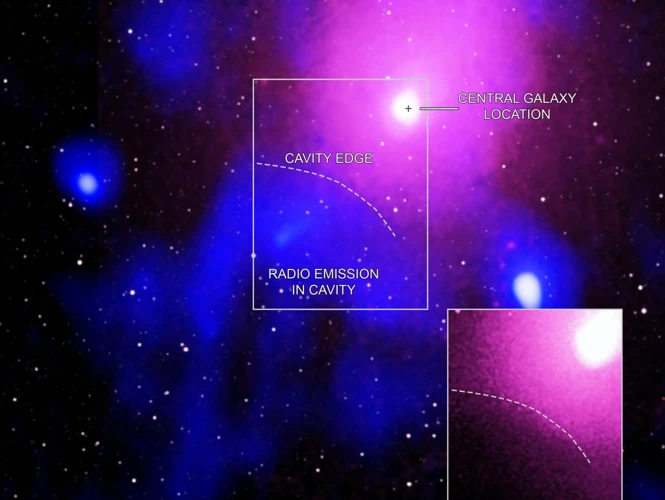
The potential impact of near-Earth asteroids (NEAs) on our planet is a topic of great concern. The consequences of a large asteroid colliding with Earth can be catastrophic, causing devastating effects on a local, regional, or even global scale. NEAs are capable of generating significant explosions upon impact, resulting in devastating shock waves, massive fires, and widespread destruction. The energy released during such an event could equal or even surpass that of a nuclear explosion.
One of the most infamous examples of an asteroid impact is the Chicxulub event, which occurred around 66 million years ago. The impact of an asteroid estimated to be around 10 kilometers in diameter is believed to have caused a mass extinction event, including the extinction of the dinosaurs. The forces unleashed by the impact led to widespread wildfires, tsunamis, global climate change, and a disruption of the ecosystem.
Less catastrophic but still significant impacts have been recorded in recent history. In 1908, the Tunguska event in Siberia resulted in a massive explosion estimated to be equivalent to 10-15 megatons of TNT. The blast flattened trees over an area of about 2,000 square kilometers and released shock waves that were felt hundreds of kilometers away. Fortunately, the impact occurred in a remote area, minimizing the loss of human life.
These historical impacts serve as powerful reminders of the potential dangers posed by NEAs and underline the importance of continued research, detection, and tracking efforts. An integral part of mitigating the impact risk lies in developing early warning systems that can detect and track NEAs accurately. Early warning allows for the assessment of potential threats and the implementation of strategies to mitigate the impact or initiate evacuation plans when necessary.
By monitoring and characterizing NEAs, scientists can better understand their trajectories, sizes, and compositions, enabling more accurate predictions of the potential consequences of an impact. These data are crucial in developing strategies to deflect or mitigate potential impacts in the future. Additionally, the study of NEAs offers insights into the early solar system and the processes that shaped our planet’s history.
For more information on celestial bodies and their impact on the universe, you can explore the concept of supermassive black holes and how they lurk at the center of galaxies, exerting their gravitational influence on the surrounding cosmic structures.
1. Potential Catastrophic Consequences
The potential consequences of a near-Earth asteroid impact cannot be underestimated, as they have the potential to cause catastrophic destruction on a global scale. The energy released upon impact can be equivalent to that of multiple nuclear explosions, leading to widespread devastation and loss of life. The immediate consequences include powerful shockwaves, intense heat, and massive fires, resulting in the destruction of infrastructure, buildings, and vegetation. The impact would also generate an enormous amount of debris that could be ejected into the atmosphere, leading to a darkening of the skies and a significant drop in temperatures. This could disrupt agricultural productivity, leading to food shortages and potentially triggering a global ecological crisis. Additionally, the release of dust and gases from the impact could have long-term effects on the Earth’s climate, potentially causing a cooling effect that could last for years. The vast destructive power of near-Earth asteroid impacts is a stark reminder of the need for proactive measures to detect, track, and mitigate these threats. By investing in early warning systems and planetary defense strategies, we can significantly reduce the potential catastrophic consequences associated with these celestial events.
If you’re interested in learning about other celestial phenomena that pose their own unique threats, you can explore the article on the topic of supermassive black holes and the potential dangers they may present to our universe.
2. Historical Impacts and Lessons Learned
The impact of near-Earth asteroids (NEAs) on our planet has been recorded throughout history, leaving behind fascinating stories and valuable lessons. One of the most famous historical impacts is known as the Tunguska event, which occurred in 1908 in Siberia, Russia. An estimated 50 to 80 meters wide asteroid exploded in the atmosphere, producing a powerful blast that flattened trees and caused seismic shockwaves over a vast area. Fortunately, the remote location of the impact limited the extent of human casualties. This event serves as a reminder of the destructive power that NEAs possess and the need for robust detection and mitigation strategies.
Another notable historical impact occurred in the Yucatan Peninsula, Mexico, approximately 66 million years ago. This impact event, known as the Chicxulub impact, is believed to have triggered widespread environmental devastation, including the extinction of the dinosaurs. The impact released an enormous amount of energy, causing massive tsunamis, global wildfires, and ejecting debris into the atmosphere, which led to a significant reduction in sunlight and disrupted the Earth’s climate. Studying this event has provided invaluable insights into the potential consequences of a large-scale impact and emphasizes the importance of monitoring and tracking NEAs to prevent such catastrophic occurrences in the future.
These historical impacts illustrate the sheer destructive power of NEAs and emphasize the necessity of developing robust planetary defense strategies. By studying the characteristics of past impact events, scientists have gained a deeper understanding of the potential consequences of future impacts and have used this knowledge to refine their approach to planetary defense. By detecting and tracking NEAs, we can assess their risk and develop effective mitigation strategies, such as asteroid deflection techniques, to divert potential threats away from Earth.
If you’re curious about other celestial phenomena, you can explore information about supermassive black holes lurking in the depths of galaxies and their intriguing properties.
Planetary Defense Strategies
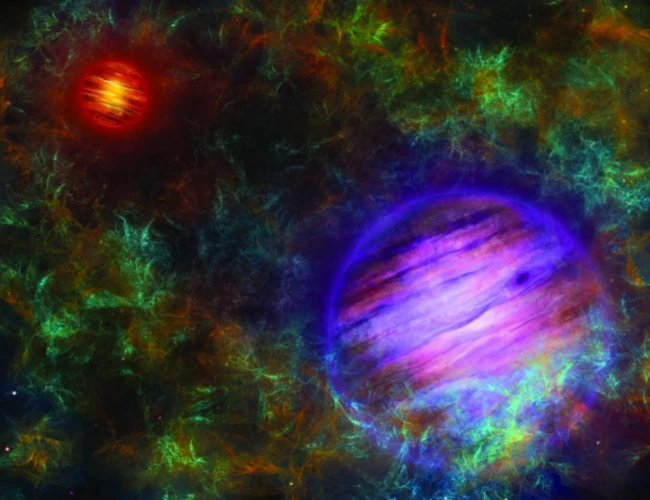
Planetary defense strategies are essential in mitigating the potential impact of near-Earth asteroids (NEAs) and safeguarding our planet from catastrophic events. These strategies encompass early warning systems, deflection techniques, and even the concept of asteroid mining for resources.
1. Early Warning Systems: Detecting and tracking NEAs at the earliest possible stage is crucial for effective defense. Through ground-based telescopes and space-based observatories, astronomers continuously monitor the skies for potential threats. The goal is to identify and track NEAs with sufficient accuracy to predict their future paths. Organizations like NASA’s Near-Earth Object Observations (NEOO) program play a pivotal role in this effort, providing constant monitoring and updates on the latest discoveries. Early warning systems enable timely public alerts and the implementation of mitigation plans.
2. Deflection Techniques: Developing methods to divert the path of approaching NEAs is another vital aspect of planetary defense. Multiple potential deflection techniques have been proposed and studied. One such method is the kinetic impactor, wherein a spacecraft is directed to collide with the NEA, imparting a change in its trajectory. Other approaches involve gravitational tractors, where a spacecraft hovers near an asteroid, using its gravitational pull to gradually alter its course. Research and testing of these techniques help determine their reliability and effectiveness in real-world scenarios.
3. Asteroid Mining for Resources: The concept of asteroid mining involves extracting valuable resources from NEAs, which can serve both commercial and strategic purposes. By mining asteroids, we can obtain vital resources such as water, metals, and other minerals that are scarce on Earth. This not only supports future space exploration but also helps in developing self-sustainability and reducing the dependency on terrestrial resources. Technologies and strategies for asteroid mining are still in early stages of development, but they hold considerable potential for future planetary defense efforts.
For further details on celestial bodies and their impact on our universe, you can explore the intriguing concept of supermassive black holes lurking at the center of galaxies.
1. Early Warning Systems
Early warning systems play a crucial role in detecting and tracking near-Earth asteroids (NEAs) and providing timely alerts for potential impacts. These systems utilize a combination of ground-based telescopes, space-based observatories, and advanced computer algorithms to scan the sky and identify any asteroids that may pose a risk to Earth. One of the key programs involved in early warning is NASA’s Near-Earth Object Observations (NEOO) program. This initiative, supported by international collaborations, aims to detect and track asteroids that come within a certain distance of our planet.
To enhance early warning capabilities, scientists are continuously improving telescope technology and developing more advanced survey techniques. The Large Synoptic Survey Telescope (LSST), expected to begin operations in the mid-2020s, will be instrumental in this regard. With its wide field of view and high data-collection rate, the LSST will be able to scan the entire sky every few nights, significantly improving our ability to identify and track NEAs.
In addition to telescopes, space-based observatories like the Sentinel Space Telescope, a part of the European Space Agency’s (ESA) proposed Hera mission, will provide valuable data on NEAs. The Sentinel Space Telescope will be specifically designed to detect and track NEOs, contributing to early detection and monitoring efforts.
Collaboration among countries, space agencies, and organizations is vital for maximizing the effectiveness of these early warning systems. Efforts such as the International Asteroid Warning Network (IAWN) and the Space Mission Planning Advisory Group (SMPAG) aim to coordinate and exchange information among different entities involved in planetary defense. This collaboration helps ensure that data is shared in a timely manner and that all stakeholders can work together to develop appropriate response strategies.
By investing in and improving early warning systems, we enhance our ability to detect and track near-Earth asteroids, providing crucial time to assess potential threats and devise appropriate mitigation measures. These systems act as a vital defense mechanism for protecting our planet and mitigating the impact of potential asteroid collisions.
For a fascinating exploration of other celestial phenomena, such as supermassive black holes lurking at the centers of galaxies, you can delve into the mysteries of these enigmatic cosmic entities.
2. Deflection Techniques
Deflecting a near-Earth asteroid (NEA) from its collision course with our planet requires careful planning and the implementation of various deflection techniques. These strategies aim to alter the trajectory of the asteroid, ensuring it avoids impact with Earth.
One of the most widely studied deflection techniques is the kinetic impactor method. This approach involves sending a spacecraft to intercept the NEA and collide with it at a high velocity. By transferring momentum to the asteroid, the spacecraft can change its trajectory. The European Space Agency’s (ESA) proposed Hera mission plans to test this technique by using a smaller spacecraft to collide with the smaller of the Didymos asteroids, in order to study the impact and assess its effectiveness.
Another deflection technique currently under investigation is the gravity tractor concept. This method involves placing a spacecraft near the asteroid and using its gravitational force to gradually alter the asteroid’s trajectory. By hovering in close proximity to the asteroid, the spacecraft’s gravitational attraction can subtly change the asteroid’s path over an extended period of time. This technique is particularly suitable for larger NEAs, where a small deflection over a long duration can significantly alter their future course.
One innovative proposal for deflection is the use of laser ablation. This technique involves firing a high-powered laser at the asteroid’s surface, causing material to vaporize and create a jet of gas. As the gas is expelled, it generates a thrust that can alter the asteroid’s trajectory. This method is still in the experimental stage but shows promise as a potential rapid-response solution for smaller NEAs.
Each deflection technique has its own advantages and challenges, and their effectiveness depends on various factors such as the size and composition of the asteroid, as well as the lead time available before a potential impact. Continued research and development are essential for refining and advancing these deflection techniques and ensuring their readiness for any future threats.
To learn more about celestial bodies, you can explore the fascinating world of Ophiuchus, a lesser-known astrological sign with an intriguing history and cultural significance.
3. Asteroid Mining for Resources
Asteroid mining has emerged as a potential solution to not only defend against near-Earth asteroids but also to harness valuable resources from these celestial bodies. NEAs contain a wealth of valuable minerals, such as iron, nickel, platinum, and rare-earth elements, making them attractive targets for resource extraction.
One of the main advantages of asteroid mining is the potential to meet the growing demand for natural resources without depleting Earth’s finite reserves. The extraction of resources from NEAs could alleviate the strain on our planet’s ecosystems and provide a sustainable source of raw materials for future space exploration and colonization endeavors.
Several methods have been proposed for extracting resources from asteroids. One approach is known as in-situ resource utilization (ISRU), where robots or humans would land on an asteroid and extract and process materials on-site. This would eliminate the need to transport resources back to Earth, which can be costly and technically challenging. ISRU technology is still in its early stages of development but holds great potential for future asteroid mining missions.
Another concept involves redirecting an asteroid into lunar orbit or near-Earth orbit to facilitate mining operations. This would provide easier access to the asteroid’s resources and enable the establishment of robotic mining facilities. These facilities could employ advanced robotics and automated systems to extract, process, and refine the resources, maximizing efficiency and minimizing human involvement.
Despite the potential benefits, there are numerous challenges associated with asteroid mining. Technical hurdles include the development of efficient mining equipment that can operate in the low-gravity and harsh environment of space. Additionally, there are legal and ethical considerations surrounding ownership and exploitation of celestial bodies, as outlined in the Outer Space Treaty of 1967.
The concept of asteroid mining for resources is an exciting prospect for future space exploration and resource utilization. By tapping into the abundant resources of NEAs, we can not only meet the growing demands of our civilization but also reduce our dependence on Earth’s limited resources. With continued advancements in technology and international collaboration, asteroid mining could become a reality in the not-so-distant future.
If you’re interested in other fascinating aspects of space, you may want to read about the mysteries of supermassive black holes that lurk in the depths of the universe.
International Collaboration in Planetary Defense
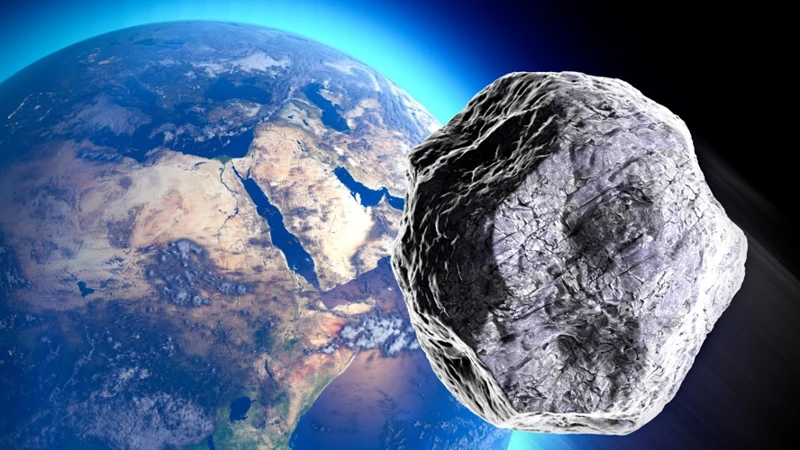
International collaboration plays a crucial role in planetary defense efforts to mitigate the threat of near-Earth asteroids. Given the global nature of the problem, countries and space agencies around the world have recognized the importance of working together to address this potential existential risk.
One notable collaborative initiative is the International Asteroid Warning Network (IAWN), established by the United Nations Office for Outer Space Affairs (UNOOSA) and the International Astronomical Union (IAU). The IAWN serves as a global network of astronomers, researchers, and experts who are dedicated to improving the coordination of asteroid detection, tracking, and characterization. By facilitating the exchange of information, sharing resources, and providing technical expertise, the IAWN aims to enhance the global capacity for early warning and response.
Another international collaboration is the NASA-led Planetary Defense Coordination Office (PDCO), which collaborates with various international partners, including space agencies, observatories, and research institutions. The PDCO oversees the coordination of planetary defense activities and conducts asteroid mitigation planning exercises, known as the International Asteroid Impact Deflection Assessment (AIDA) mission. This collaborative effort involves the European Space Agency’s Hera spacecraft and NASA’s Double Asteroid Redirection Test (DART) mission to test deflection techniques on a binary asteroid system.
International cooperation extends beyond governmental organizations and includes partnerships with private entities. Companies such as SpaceX and Blue Origin are actively involved in asteroid research and exploration. SpaceX’s CEO, Elon Musk, has expressed his interest in potentially deflecting asteroids using the Starship spacecraft. These private-public collaborations contribute to the advancement of technology, resources, and expertise in planetary defense.
Collaboration in planetary defense also paves the way for future missions, including asteroid exploration and asteroid mining for resources. The scientific and technological knowledge gained through international cooperation can be harnessed to explore and extract valuable resources from near-Earth asteroids, such as water, precious metals, and rare earth elements. These resources could potentially fuel future space missions and support sustainable space exploration.
International collaboration is essential in the field of planetary defense. By working together, countries, organizations, and private entities can pool their resources, knowledge, and expertise to improve detection capabilities, develop robust mitigation strategies, and advance our understanding of near-Earth asteroids. This collaborative effort ensures a coordinated and global response, enhancing our ability to protect our planet from potential catastrophic impacts.
Challenges and Future Developments
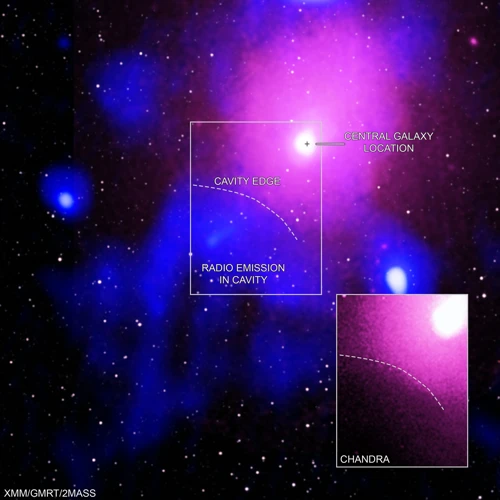
Managing the threat of near-Earth asteroids and developing effective planetary defense strategies pose several challenges and require continuous advancements in technology. One of the major challenges is the need to improve detection and tracking technologies. While significant progress has been made in recent years, there are still limitations in our ability to detect smaller asteroids and those that have a low reflectivity or are obscured by other celestial objects. Researchers and scientists are actively working on developing more sensitive telescopes and space-borne instruments to enhance our capabilities in tracking these elusive objects.
Another challenge lies in the global coordination of efforts for planetary defense. Near-Earth asteroids are a global concern, and international collaboration is crucial for effective detection, tracking, and response to potential threats. The International Asteroid Warning Network (IAWN) and the Space Mission Planning Advisory Group (SMPAG) are organizations that facilitate this collaboration by bringing together experts from various countries to share data, research, and strategies. However, further efforts are needed to strengthen international partnerships and improve the exchange of information and resources.
Advancing deflection and mitigation technologies is another important area of focus. While there are several proposed deflection techniques, such as using a kinetic impactor or deploying a gravity tractor, the development and testing of these technologies are still in progress. Research is ongoing to refine these methods and explore new approaches, such as utilizing the gravitational pull of spacecraft to nudge asteroids off their collision course. Continued investments in research and development will be crucial for bolstering our defensive capabilities against potential asteroid impacts.
In addition to these challenges, future developments in the field of asteroid deflection and planetary defense include the exploration of asteroid mining for resources. Asteroids are rich in valuable minerals and water, which can be extracted and utilized for various space missions and exploration endeavors. Mining asteroids not only provides a potential solution for resource scarcity but also offers economic opportunities and advances in space technology. Companies like NASA and private space agencies are investigating the feasibility of asteroid mining and the development of technologies to extract resources from these celestial bodies.
Addressing the threat of near-Earth asteroids and formulating effective planetary defense strategies require overcoming various challenges. Advancements in detection and tracking technologies, international collaboration, and the development of deflection techniques are key areas of focus. Exploring the potential of asteroid mining for resources opens up new possibilities for space exploration and sustainable resource utilization. As we continue to improve and innovate, we ensure a safer future for our planet and gain valuable insights into the fascinating universe around us.
To delve deeper into the wonders of the universe, you can learn about the existence and mysteries of supermassive black holes lurking at the centers of galaxies.
1. Improving Detection and Tracking Technologies
Improving detection and tracking technologies is a crucial aspect of planetary defense against near-Earth asteroids (NEAs). As the number of known NEAs continues to grow, it is essential to enhance our ability to identify and monitor these objects, ensuring early detection and timely response to potential threats.
One area of technological advancement lies in the development and deployment of more powerful telescopes and observatories. Ground-based telescopes equipped with advanced imaging systems and large aperture sizes enable astronomers to survey the sky with greater accuracy and sensitivity. Additionally, space-based telescopes, such as the Near-Earth Object Camera (NEOCam) proposed by NASA, offer the advantage of observing NEAs without the atmospheric interference experienced by ground-based telescopes.
Enhancements in radar systems have also played a significant role in improving detection and tracking capabilities. Radar allows scientists to precisely measure an asteroid’s distance, speed, and size by bouncing radio waves off its surface. This technique provides valuable information, including asteroid shape, rotation rate, and surface features. Ground-based radar systems, like the Goldstone Solar System Radar operated by NASA’s Jet Propulsion Laboratory, are used in conjunction with optical telescopes to obtain a comprehensive understanding of NEAs.
The use of artificial intelligence (AI) and machine learning algorithms has proven to be instrumental in automating the detection process. These algorithms can analyze large sets of observational data and identify potential NEAs based on their movement patterns and brightness variations. By training AI systems to recognize the unique signatures of NEAs, scientists can increase the efficiency and accuracy of detection methods.
Collaboration and data sharing among various organizations, such as NASA, international space agencies, and research institutions, is also crucial for improving detection and tracking technologies. By pooling resources, expertise, and observational data, the global community can enhance the accuracy and coverage of NEA monitoring efforts.
For information about other intriguing celestial phenomena, you can read about the mysterious supermassive black holes lurking at the centers of galaxies.
2. Enhancing Global Coordination for Planetary Defense
Enhancing global coordination is crucial for the successful implementation of planetary defense strategies against near-Earth asteroids (NEAs). The threat posed by NEAs is a global concern that requires collaboration and cooperation among nations. Effective communication and coordination between various space agencies, scientific organizations, and governments can greatly improve our ability to detect, track, and respond to potential asteroid impacts.
One of the key initiatives in enhancing global coordination for planetary defense is the International Asteroid Warning Network (IAWN). Established in 2013 under the auspices of the United Nations, the IAWN serves as a platform for sharing information and expertise among member states. Its primary goal is to improve the coordination of asteroid observations and to facilitate the exchange of data and scientific knowledge. By pooling resources and expertise, member nations can enhance their individual capabilities in detecting and tracking NEAs.
In addition to the IAWN, the Planetary Defense Coordination Office (PDCO) at NASA plays a vital role in facilitating international cooperation. The PDCO serves as a focal point for communication and coordination among various national and international organizations involved in planetary defense. It facilitates the sharing of information, coordinates observation campaigns, and promotes research and development of deflection techniques. By fostering collaboration, the PDCO aims to ensure a unified global response to the threat of NEAs.
International collaboration can extend beyond government agencies and involve private entities. The emerging field of asteroid mining offers potential incentives for private companies to get involved in planetary defense efforts. By extracting valuable resources from NEAs, such as precious metals and water, these companies can contribute both to commercial interests and the development of technologies for asteroid deflection. Encouraging partnerships between public and private sectors can foster innovation and advance the effectiveness of planetary defense strategies.
By enhancing global coordination, we can harness the collective efforts and resources of nations around the world to protect our planet from the threat of NEAs. Cooperation in areas such as data sharing, research, and technological advancements will strengthen our ability to detect, track, and mitigate potential impact risks. The international community’s collaboration in this crucial endeavor ensures that we are better equipped to safeguard humanity and the future of our planet.
To better understand the universe and the mysteries it holds, you may explore the knowledge about supermassive black holes that might be lurking at the centers of galaxies.
3. Advancing Deflection and Mitigation Technologies
Advancing deflection and mitigation technologies play a crucial role in our ability to protect Earth from the potential threat of near-Earth asteroids. A variety of techniques are being explored and developed to alter the trajectory of these asteroids and minimize the risk of impact.
One promising approach is the kinetic impactor method. This involves using a spacecraft to collide with the asteroid, imparting a small but significant change in its trajectory through the transfer of momentum. The Double Asteroid Redirection Test (DART), a mission led by NASA in collaboration with international partners, aims to demonstrate the effectiveness of this strategy by targeting the moon of a binary asteroid system in 2021.
Another strategy under investigation is the gravity tractor method. This involves parking a spacecraft near an asteroid and using its gravitational force to gradually alter the asteroid’s path over an extended period of time. By accurately calculating and monitoring the gravitational interactions between the spacecraft and the asteroid, scientists can gradually nudge the asteroid onto a safer trajectory.
Additionally, scientists are researching the possibility of using directed energy technologies to deflect asteroids. This involves using high-energy lasers or focused solar energy to heat up a small region on the surface of the asteroid. The resulting thermal radiation causes the asteroid’s material to vaporize and create a jet of gas, which acts as a thruster, pushing the asteroid in the opposite direction. While still in the experimental stage, this method shows potential for redirecting asteroids away from Earth.
In the quest for understanding celestial bodies and their potential threats, it is fascinating to explore the concept of supermassive black holes lurking in the depths of the universe. By studying these enigmatic cosmic entities, astronomers gain insights into the mechanisms that shape galaxies and the universe itself.
Conclusion

In conclusion, the threat of near-Earth asteroids poses a significant risk to our planet, but our understanding of these celestial objects has improved significantly in recent years. By studying the nature of near-Earth asteroids, including their composition, characteristics, and detection methods, scientists and space agencies have made great strides in developing planetary defense strategies. Early warning systems and improved detection technologies play a vital role in identifying potential threats and providing crucial time to devise deflection techniques. The collaboration and coordination between nations are essential for a comprehensive planetary defense approach. Additionally, advancements in deflection and mitigation technologies, along with the potential utilization of asteroid resources through mining, offer promising avenues for future developments. It is imperative that we continue to enhance our knowledge of near-Earth asteroids, improve our global coordination efforts, and push the boundaries of technology to safeguard our planet from the potential catastrophic consequences of a future impact event.
Frequently Asked Questions

1. How many near-Earth asteroids have been discovered so far?
Over 25,000 near-Earth asteroids have been discovered and cataloged by scientists.
2. What is the largest known near-Earth asteroid?
The largest known near-Earth asteroid is asteroid (101955) Bennu, which is approximately 500 meters in diameter.
3. Can a near-Earth asteroid collide with Earth?
Yes, it is possible for a near-Earth asteroid to collide with Earth if its trajectory aligns with our planet’s orbit.
4. How frequent are near-Earth asteroid impacts?
Significant near-Earth asteroid impacts occur once every few thousand years on average, but smaller impacts can happen more frequently.
5. What are the potential consequences of a near-Earth asteroid impact?
A near-Earth asteroid impact can have catastrophic consequences, including widespread destruction, tsunamis, and climatic changes.
6. Are there any known near-Earth asteroids on a collision course with Earth?
Currently, there are no known near-Earth asteroids on a collision course with Earth in the foreseeable future.
7. Can we predict the trajectory of near-Earth asteroids accurately?
With the advancements in technology and observational methods, scientists can predict the trajectory of near-Earth asteroids with a high degree of accuracy.
8. How can early warning systems help in mitigating the threat of near-Earth asteroids?
Early warning systems provide sufficient time to assess the threat, plan potential deflection strategies, and initiate evacuation measures if necessary.
9. Are there any plans to mine near-Earth asteroids for resources?
Yes, there are plans and ongoing research to explore the possibility of asteroid mining to extract valuable resources for future space missions and colonization efforts.
10. How can international collaboration enhance our planetary defense strategies?
International collaboration allows for the sharing of resources, knowledge, and expertise, leading to improved detection, tracking, and deflection techniques for near-Earth asteroids.
References
- The Asteroid Threat: Defending Our… by Burrows, William E.
- Defend Earth
- Asteroids and Planetary Defense | Astronomy
Frequently Asked Questions

1. How often do Near-Earth Asteroids pose a threat to Earth?
Near-Earth Asteroids pose a threat to Earth occasionally, but the frequency of such events can vary. While smaller asteroids constantly enter Earth’s atmosphere, burning up harmlessly, larger asteroids with potential catastrophic consequences are much rarer.
2. What types of Near-Earth Asteroids are of concern?
There are mainly three types of Near-Earth Asteroids that are of concern: Apollo asteroids, Aten asteroids, and Amor asteroids. Apollo asteroids have orbits that cross Earth’s orbit, Aten asteroids have orbits that come close to Earth, and Amor asteroids have orbits that come near Earth but don’t cross its orbit.
3. Can Near-Earth Asteroids be detected and tracked?
Yes, Near-Earth Asteroids can be detected and tracked using various methods. Astronomers use ground-based telescopes, space-based telescopes, and radar systems to locate and monitor these asteroids.
4. How are Near-Earth Asteroids classified based on their characteristics?
Near-Earth Asteroids can be classified based on their characteristics such as size, composition, and orbit. They can be categorized as either rocky or metallic, and their size can range from a few meters to several kilometers in diameter.
5. What are the potential catastrophic consequences of a Near-Earth Asteroid impact?
A Near-Earth Asteroid impact can have catastrophic consequences, including massive explosions, tsunamis, widespread fires, and the release of dust and debris into the atmosphere, which can lead to a global cooling effect and disrupt ecosystems.
6. What lessons have been learned from historical impacts?
Historical impacts, such as the Tunguska event in 1908 and the Chelyabinsk meteor in 2013, have highlighted the importance of early detection and tracking. These events have also increased awareness about the potential devastation caused by Near-Earth Asteroid impacts.
7. How can early warning systems contribute to planetary defense?
Early warning systems play a crucial role in planetary defense by providing advanced notice of potential Near-Earth Asteroid threats. These systems allow scientists to track and predict the future path of asteroids, giving us time to develop appropriate mitigation strategies.
8. What are deflection techniques and how do they work?
Deflection techniques involve altering the path of a Near-Earth Asteroid to prevent a potential impact. Methods include spacecraft missions to intercept and redirect the asteroid using gravity, kinetic impactors, or by detonating a nuclear device near the asteroid’s surface.
9. How can asteroid mining contribute to planetary defense?
Asteroid mining has the potential to provide valuable resources for planetary defense efforts. By extracting and utilizing resources from asteroids, we could develop the necessary technologies and infrastructure to further enhance our defense capabilities.
10. Why is international collaboration important in planetary defense?
International collaboration is crucial in planetary defense because Near-Earth Asteroids pose a global threat. By sharing data, resources, and expertise, countries can work together to monitor, track, and mitigate potential asteroid impacts, ensuring the safety and well-being of humanity as a whole.
References
- Defend Earth
- The Asteroid Threat: Defending Our… by Burrows, William E.
- Asteroids and Planetary Defense | Astronomy

